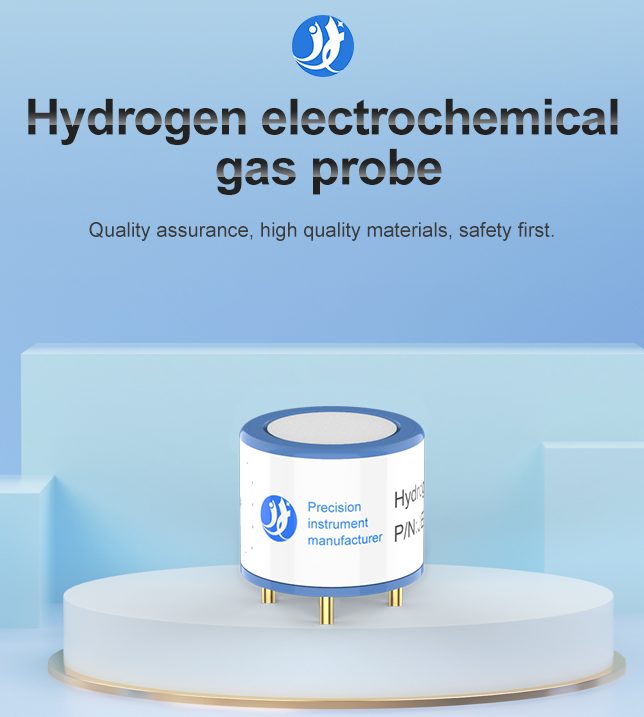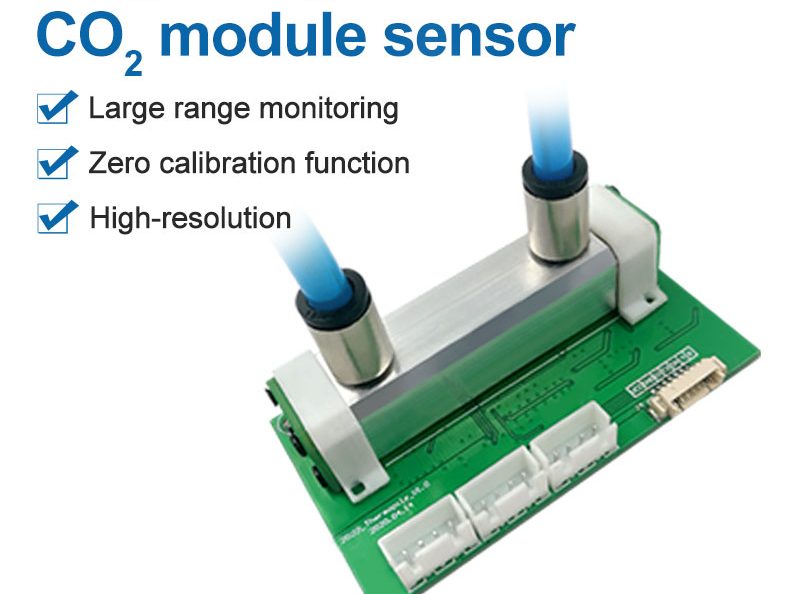Gas sensors
Gas sensors are essential devices used to monitor the presence and concentration of various gases in the environment. These sensors play a critical role in ensuring safety, environmental protection, and process control in a wide range of industries, including manufacturing, oil and gas, environmental monitoring. In this essay, we will explore the principles of gas sensors and the different technologies used to detect and measure gases, as well as the factors to consider when choosing a gas sensor for a specific application.

Working principle of gas sensor
Gas sensors operate based on the principle of detecting and quantifying the presence of target gases in the surrounding environment. The detection process involves the interaction between the gas molecules and the sensing element within the sensor. When the target gas comes into contact with the sensing element, it triggers a physical or chemical reaction that leads to a measurable change in the sensor’s electrical, optical, or physical properties. This change is then converted into an electrical signal that can be analyzed and determine the concentration of the gas.
There are several key technologies used in gas sensors, each with its own advantages and limitations. Some of the most common gas sensing technologies include:

Electrochemical Sensors: Electrochemical gas sensors are widely use for detecting toxic gases such as carbon monoxide, hydrogen sulfide, and chlorine. These sensors employ an electrochemical cell with electrodes and an electrolyte. When the target gas comes into contact with the electrodes, a chemical reaction occurs, leading to the generation of an electrical current that is proportional to the gas concentration.
Catalytic Bead Sensors: Catalytic bead sensors are commonly detecting combustible gases such as methane, propane, and hydrogen. These sensors contain a pair of heated beads coated with a catalyst material. When the target gas oxidizes on the bead surface, it causes a change in temperature, which is a change in capacitance.

Infrared Sensors: Infrared gas sensors operate based on the absorption of infrared light by the target gas. Each gas has a unique absorption spectrum, allowing infrared sensors to selectively detect specific gases. These sensors are measuring gases such as carbon dioxide, hydrocarbons, and refrigerants.
Photoionization Detectors (PID): PID sensors utilize ultraviolet (UV) light to ionize gas molecules, generating a measurable electrical current. These sensors are highly sensitive and can detect a wide range of volatile organic compounds (VOCs) and other gases with low ionization potentials.
Metal Oxide Semiconductor (MOS) Sensors: MOS sensors consist of a semiconductor material that changes its electrical conductivity when exposed to specific gases. These sensors are suitable for detecting gases such as carbon monoxide, nitrogen dioxide, and volatile organic compounds.
When choosing a gas sensor, it is important to consider several factors to ensure that the sensor meets the specific requirements of the application. Some key considerations include:
Target Gas: We identify the gases in the environment that need to be monitored. Different sensors detect specific gases, so choosing a sensor that can detect the target gas is crucial.
Sensitivity and Selectivity: Assess the sensitivity and selectivity of the sensor to ensure that it can detect the target gas at the required concentration levels, while minimizing interference from other gases or environmental factors.
Measurement Range: Consider the measurement range of the sensor to ensure that it can accurately measure the concentration of the target gas within the required range for the application.
Response Time: Evaluate the sensor’s response time, which is the time it takes for the sensor to detect and report changes in gas concentration. For applications requiring rapid detection of gas leaks or fluctuations, a sensor with a fast response time is essential.
Power Requirements: Consider the power requirements of the sensor, including voltage, current, and power consumption. For portable or battery-operated applications, low power consumption is crucial for extending the sensor’s operational lifespan.
Calibration and Maintenance: Assess the calibration and maintenance requirements of the sensor, including the frequency of calibration, sensor lifespan, and availability of calibration gases or equipment.
Cost and Long-Term Reliability: Evaluate the initial cost of the sensor, as well as the long-term reliability and durability. Consider the overall value of the sensor in relation to its performance and expected lifespan.
Conclusion
In conclusion, gas sensors are essential tools for monitoring and detecting the presence of gases in various environments. By understanding the principles of gas sensing and the different technologies available, as well as considering the key factors when choosing a gas sensor, it is possible to select a sensor that meets the specific needs of the application. Whether it is for industrial safety, environmental monitoring, or process control, the right gas sensor can provide accurate and reliable data to ensure the safety and efficiency of operations.